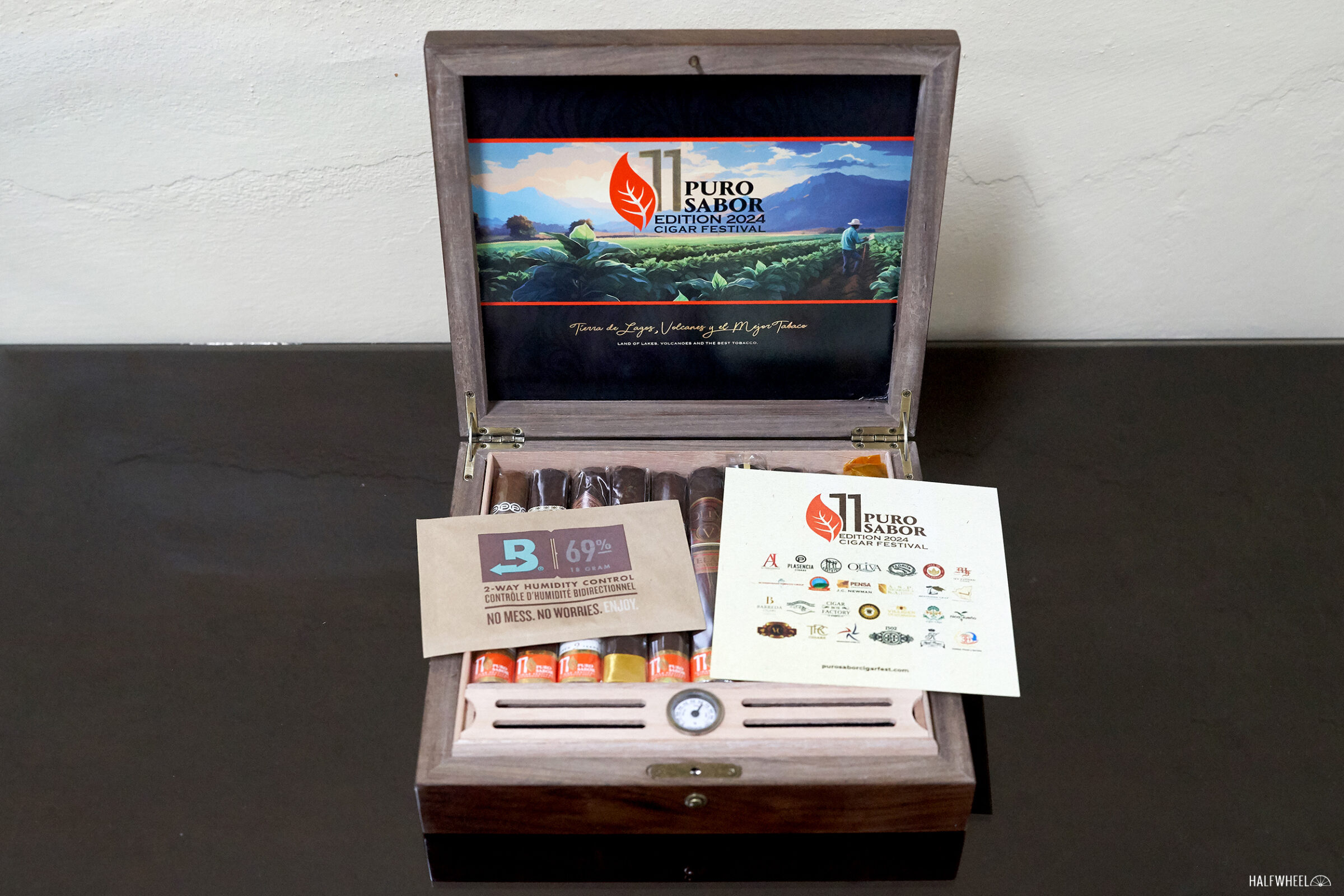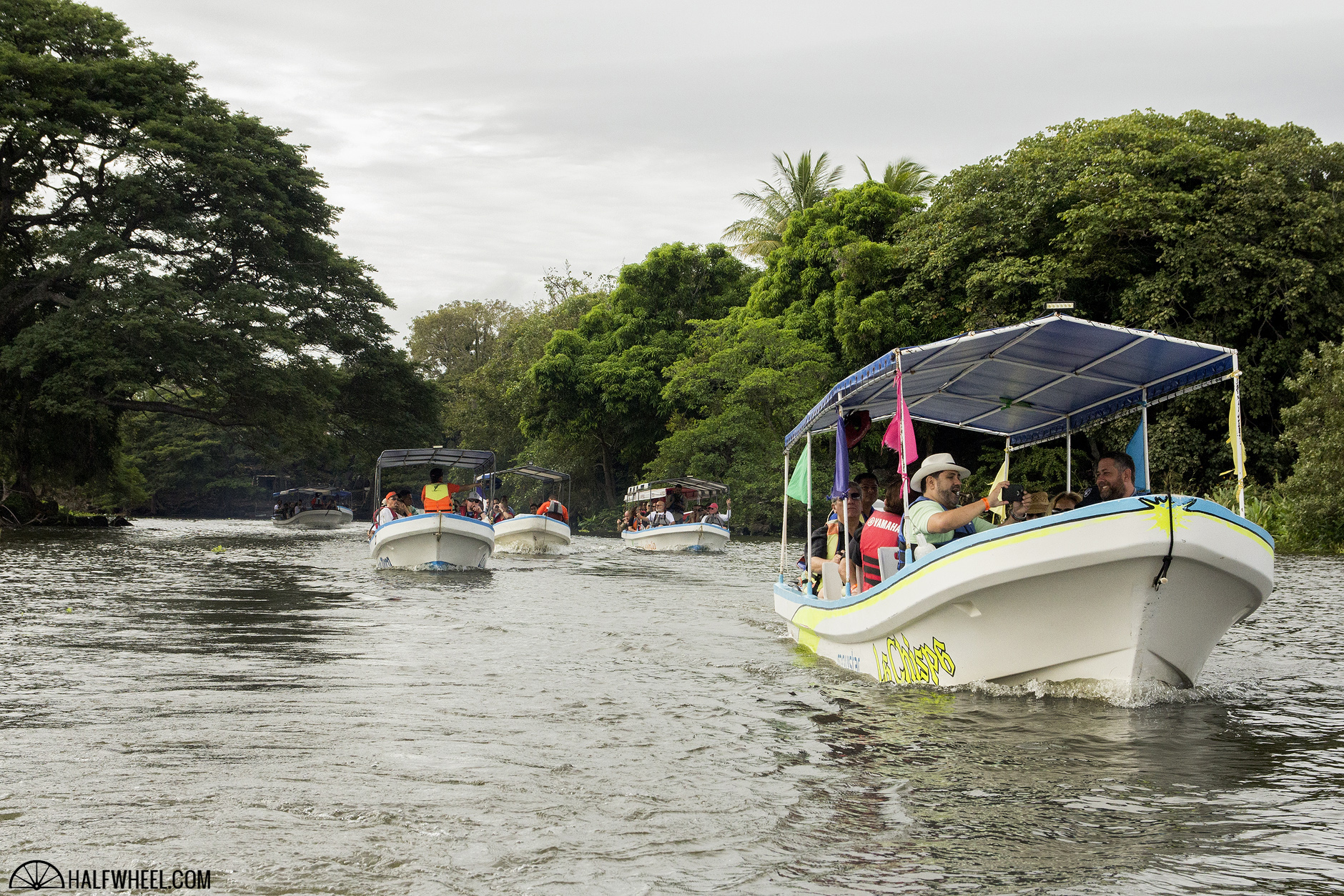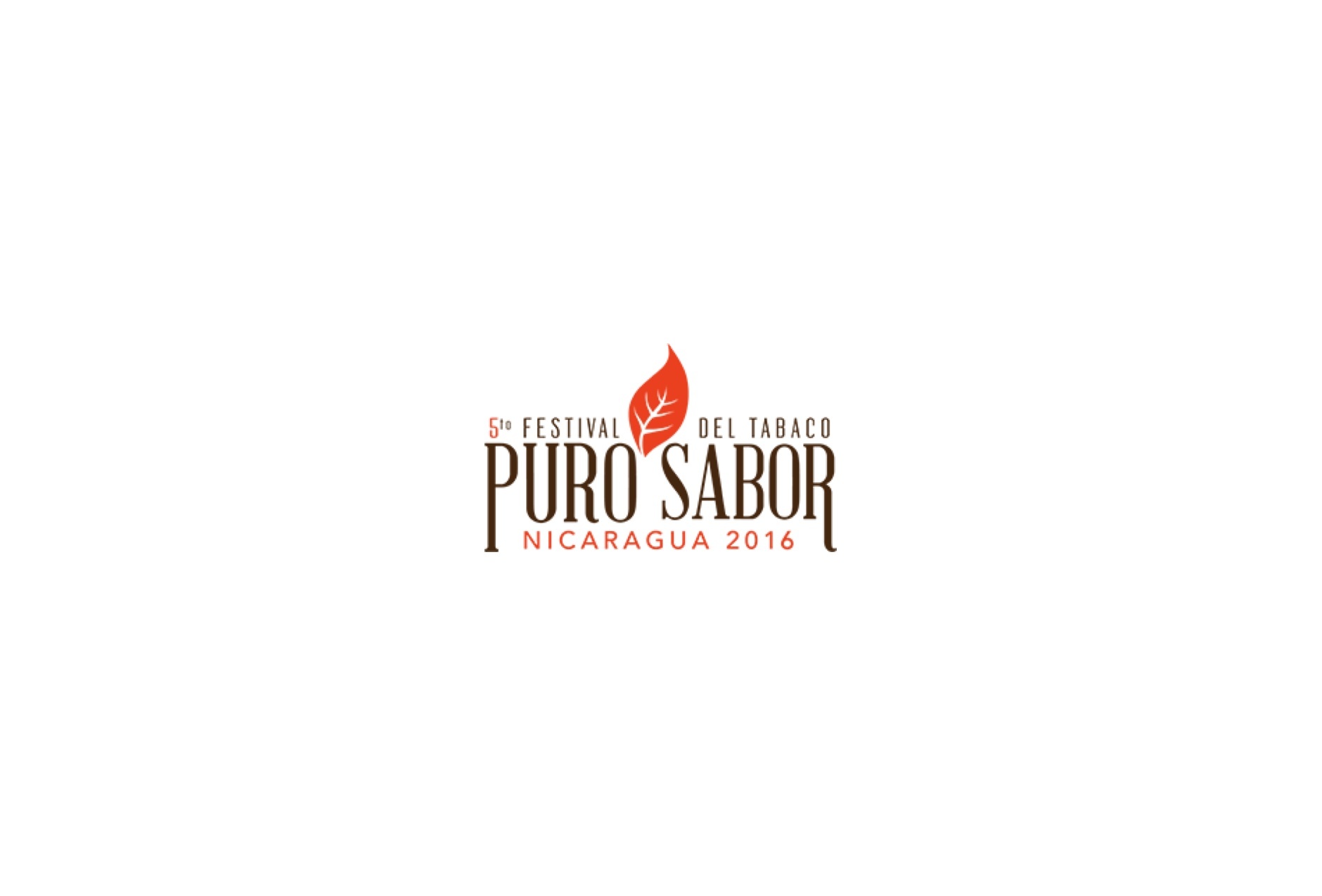The second day of Puro Sabor 2024 came with the earliest starting time of the week, as participants had to be ready at 7:45 a.m. for an 8 a.m. departure to a new addition to the agenda: field day in Condega.
Condega is a growing region located about 22 miles north of Estelí, making for about an hour’s long drive in the buses that transport the group this week. Our destination was Hacienda d’Ernesto, part of Oliva Cigar Co.’s operations. This was the one day when all of the attendees were together on the same trip, making for a rather large group of people as opposed to the smaller groups that will tour factories and fields beginning on Wednesday, which generally number about 15 people.
Seemingly due to some issues regarding schedules and communication, the arrival at Hacienda d’Ernesto didn’t quite get off to the smoothest of starts. We started in one of the nurseries with a quick course in how tobacco seeds are initially planted, and then the strongest and heartiest ones from that initial plastic tray are selected and transplanted very delicately into individual squares on another seed tray. From there, it’s careful care and watering to help them grow over the next sixty or so days, at which time they get mowed so that it will stress the plant to further develop its root structure before heading to the fields, as well as to have the plants all start at a fairly consistent height.
I find at least one thing at every visit that I haven’t seen before or rarely see elsewhere, and the lawnmower used to do said mowing was impressive. Essentially, it’s a standard lawn mower with the wheels removed and then the body mounted to a frame that allows a worker to push through a tray of young plants so that the blades can do their thing while another worker takes the tray and passes it on to another worker who returns it to shelf. In all, I think I counted six people in the process.
Once that was done and probably hundreds if not thousands of pictures taken, it was time for a refreshment and to meet some local artisans who set up a craft fair of sorts, including Ortez Design, a leather goods company started by Indira Ortez, one of cigar maker Omar Ortez’s daughters. There were also coffee growers, a winemaker, a jewelry maker, a clothing designer, and several others.
This was also one of the spots where it felt like something about the day’s plans didn’t get as thought out or communicated as I would have expected from Puro Sabor’s organizers, the Camara Nicaraguense de Tabacaleros (CNT), or the Nicaraguan Chamber of Tobacco.
For a group that has been quite well organized over the past several years with steady improvements along the way, this awkward pause was a surprise. Also along those lines, not having any cigars on hand for the attendees was definitely a miss. In previous years, it was hard to keep up with all the cigars being handed to me but between the time I arrived on Sunday afternoon and Tuesday before lunch, I received a total of five cigars. While I, along with a number of other attendees, packed my own, I imagine other attendees did not.
Eventually, the group moved over to another part of the farm and self-divided into three groups that went to various parts of the fields. I opted to follow Ernesto Milanes Rodriguez to the plot of land dedicated to research, hybridization and other developmental endeavors, which proved to be a solid decision.
It was there that we were joined by Vivaldo Garcia, who joined the operation in 2019 after an impressive career working in the Cuban tobacco industry, so much so that he was introduced as one of the top two or three tobacco geneticists in the industry, as well as the person credited with the development of the well-known seeds of corojo 98, criollo 99, and corojo 2012. If you’re into academic papers about tobacco plants, he’s worth a Google search.
He showed how tobacco plants are hybridized, effectively combining the male and female parts of two plants by hand and then setting them up to produce seeds that go through at least five generations of growth without the aid of pesticides or other protections to see just how well they will perform in the big fields. That’s also before those leaves get harvested and undergo curing and fermentation, key steps on the journey to becoming a cigar.
In an area of the farm dedicated to growing new plants and working with existing ones, he also showed off some plants that had been infected with the tobacco mosaic virus, which causes the leaves to develop mottling and discoloration as the plant eventually succumbs to the virus. Then he showed off the same varietal of plant that had been bred for resistance to the virus; he and his team had infected the plant with the virus, which resulted in a single spot around initial exposure, but the rest of the plant looked strong and healthy as it didn’t succumb to the virus.
Additionally, the Hacienda d’Ernesto team showed off a new tool they are using to measure the nutrition of plants during the fertilization phase, which was quite impressive. To get the results, a tobacco leaf is moistened and then pushed through what appeared to be a garlic press kind of device, with the output added to a solution, stirred, and dropped onto six devices that measure acidity, potassium, nitrates and other key aspects of growing healthy tobacco plants.
While I wished we would have had a chance to go on the two other parts of the tour, lunch was calling and we were off. Oliva Serie Vs and Serie V Melanios were handed out upon entry, as well as the fairly new Flor de Caña Hard Seltzer, which is fairly decent, coming from someone who has not jumped on the hard seltzer train. They’re certainly not a match for an ice-cold Toña beer or some Flor de Caña 12 or 18 Year rum, both of which have been poured extensively throughout the event.
Fred Vandermarliere of Vandermarliere Family of Cigars, the owner of Oliva, offered some opening remarks ahead of most people getting their lunch.
For those here for the food, lunch included a mix of salads, rice and beans, chicken, pork, steak, and sausages, among other things, another very satisfying meal.
The time under the lunch tent was concluded with a tasting of Flor de Caña 18 Year rum led by Alejandra Pereira, the Flor de Caña brand ambassador in Nicaragua. She highlighted not just the company’s awards but its sustainability projects and initiatives, including being the world’s first spirit to be certified as both carbon neutral and fair trade. The company is also partnering with One Tree Planted to put 1 million new trees in the ground by 2025.
With lunch wrapped up, it was time to head back to Estelí for a bit before dinner, a time I used mainly to take a nap and catch up on e-mails and other work. Just as we were about to head out to STG Estelí for the evening’s dinner, we received the first box of cigars from the festival, a collection of 20 cigars from the members of the CNT.
Dinner was kicked off by another welcome from Manuel Rubio, general manager of Drew Estate and president of the CNT, who was joined by the mayor of Estelí, Francisco Valenzuela, also spoke for a few minutes and praised the tobacco industry’s contributions to the city and region, citing the ongoing growth of the industry and how that has resulted in more employment for the city’s residents and an increased quality of life.
Given it was still early in the week, the evening’s energy was good but subdued, especially compared to what I expect from Thursday’s white dinner and the closing gala on Friday, which will be held at J.C. Newman PENSA and Oliva’s fairly new Las Mesitas facility, which is a tobacco processing and storage facility on the way to Condega. But there was still some dancing to a DJ and dance lessons led by a local dance group to help get attendees on their feet and onto the dance floor.
As for what’s in store for Wednesday, I will be heading to Oliva’s main cigar factory in the morning, followed by a group lunch at Estelí Cigars, and then visits to Villiger de Nicaragua and Fábrica de Tabacos Nica Sueño S.A. in the afternoon. Then, we will be off to dinner at Victor Calvo to conclude the day.
As always, if there’s something you’d like to know about the festival, or something you’d like to see, feel free to leave a comment and I will do my best to answer it. I’ll also be posting a bit on both halfwheel‘s Instagram account as well as my own, so follow those to see some more shots from the week.

















